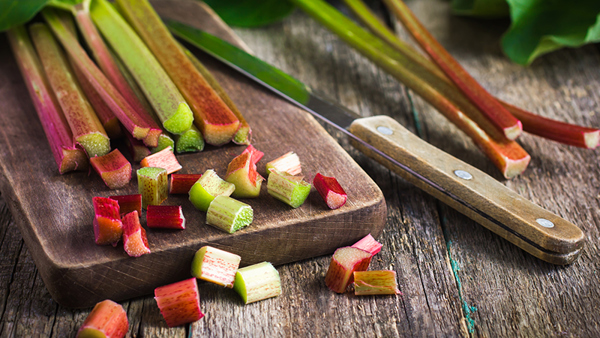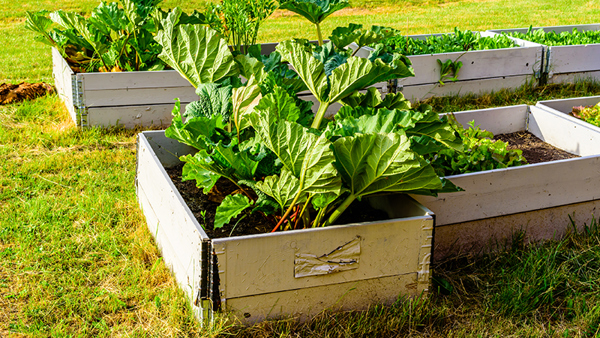Yates Account
Join now
Create a Yates account today!
Sign up to join the Yates Garden Club for monthly e-mails packed with seasonal inspiration, tips for success & exclusive promotions.
Plus if you’re a Garden Club member you can take part in the Yates Growing Community - a blog to share successes, get advice & win prizes in fun challenges along the way!

Forgot password
Enter the email address associated with your account, and we'll email you a new password.

How to grow rhubarb in a garden
- Choose a sunny or part-shade spot in your garden, protected from the hot afternoon sun. Loosen soil and enrich with Yates Thrive Natural Blood & Bone with Seaweed.
- Sow seeds direct or plant in trays of Yates Black Magic Seed Raising Mix and allow seeds to grow 7cm tall before transplanting. If growing from crowns, plant so that the roots are under the soil, but the ‘eye’ (from where the shoots will emerge) is at ground level.
- Feed weekly with Yates Thrive Natural Fish Seaweed+ Plant Food Concentrate during the growing season and mulch around the base of the plant with organic mulch like pea or lucerne straw to retain moisture.
- Wait until the second year before harvesting. Harvest by pulling stalks away from the main stem – don’t cut them as exposed stems can cause rot. Continually harvest to promote new growth and remove any flower stalks.


How to grow rhubarb in a pot
- Choose a pot at least 500mm wide and deep. Position in a sunny or part-shade spot in your garden, protected from the hot afternoon sun. Fill with quality potting mix, such as Yates Premium Potting Mix.
- Fill starter trays with Yates Black Magic Seed Raising Mix. Sow seeds, lightly cover and water. Keep the soil moist throughout germination. If growing from crowns, plant so the roots are under the potting mix, but the ‘eye’ (from where the shoots emerge) is at ground level.
- Once seedlings reach 7cm tall, transplant into chosen pot and water in well.
- Feed plants weekly with Yates Thrive Natural Fish Seaweed+ Plant Food Concentrate during the growing season.
- Wait until the second year before harvesting. Harvest by pulling stalks away from the main stem – don’t cut them as exposed stems can cause rot. Continually harvest to promote new growth and remove any flower stalks.
Growing tips
-
Don’t begin harvesting until the plant is well established, which may mean waiting until the second year. Harvest by pulling stalks away from the base with a sharp tug. Never cut them.
-
Leave the youngest stalks in the centre of each plant to promote new growth.
-
Rhubarb leaves and roots are poisonous and should be discarded or composted.
-
After about four or five years, break up the established clump and spread to new, well-prepared parts of the garden. The best time to divide is in winter.
-
Stalks don’t always develop red stems, but green stems are safe to eat and the flavour is just as good. Stems tend to develop stronger red colouring in cooler climates.
-
In winter, loosen soil around the plants and fork in Yates Thrive Natural Blood & Bone with Seaweed. This will give them a good start for spring growth.
















Share
Share this article on social media